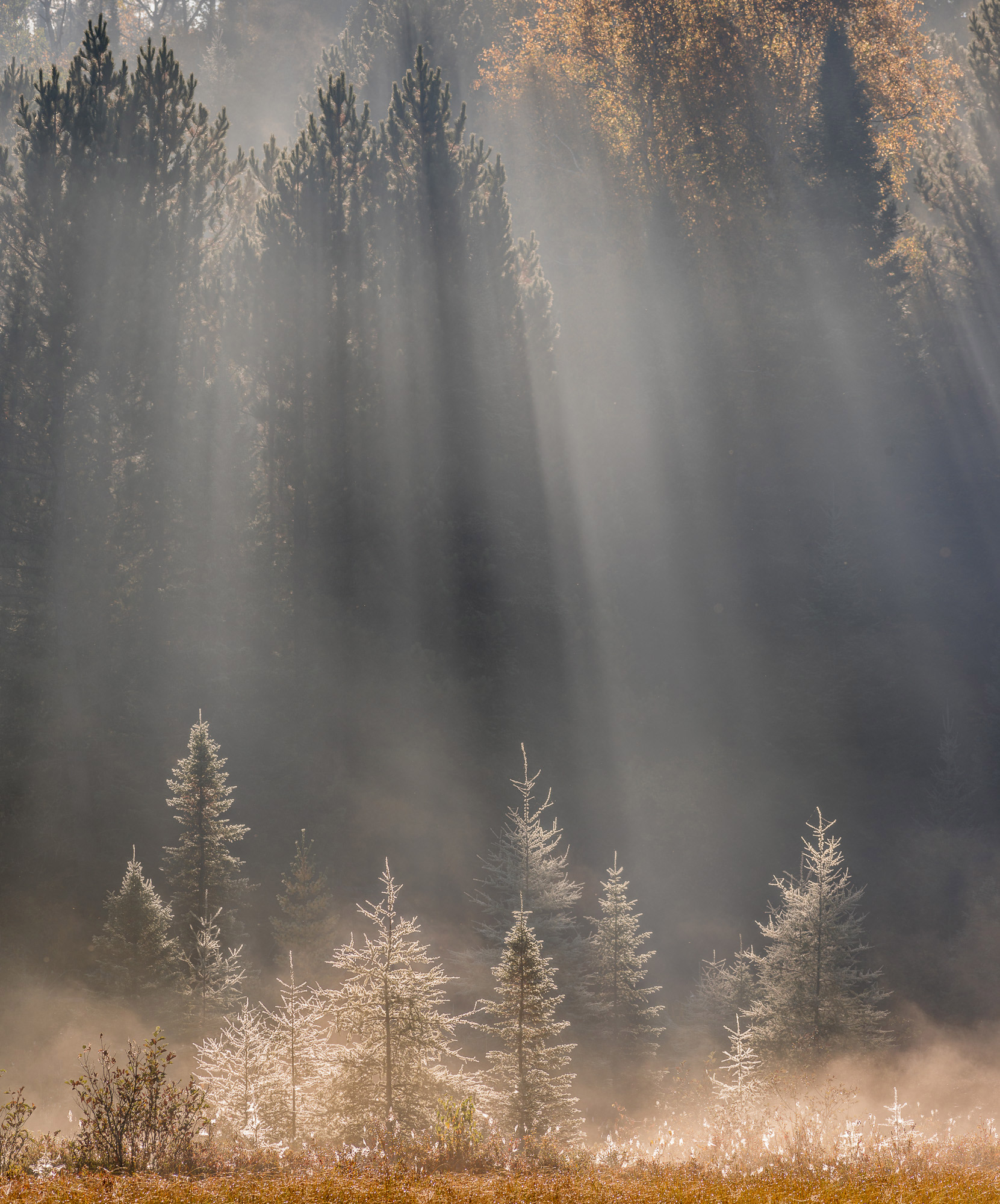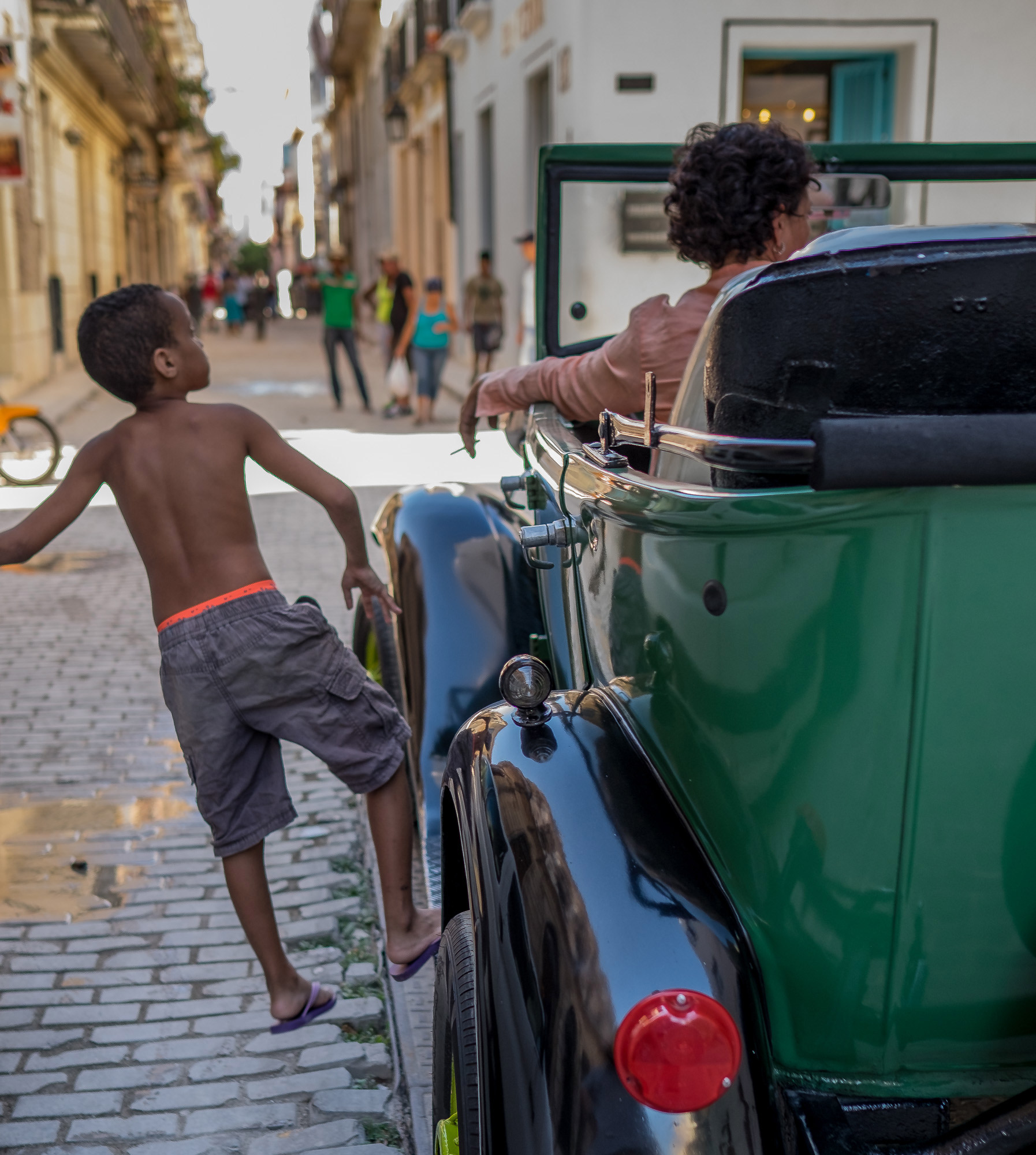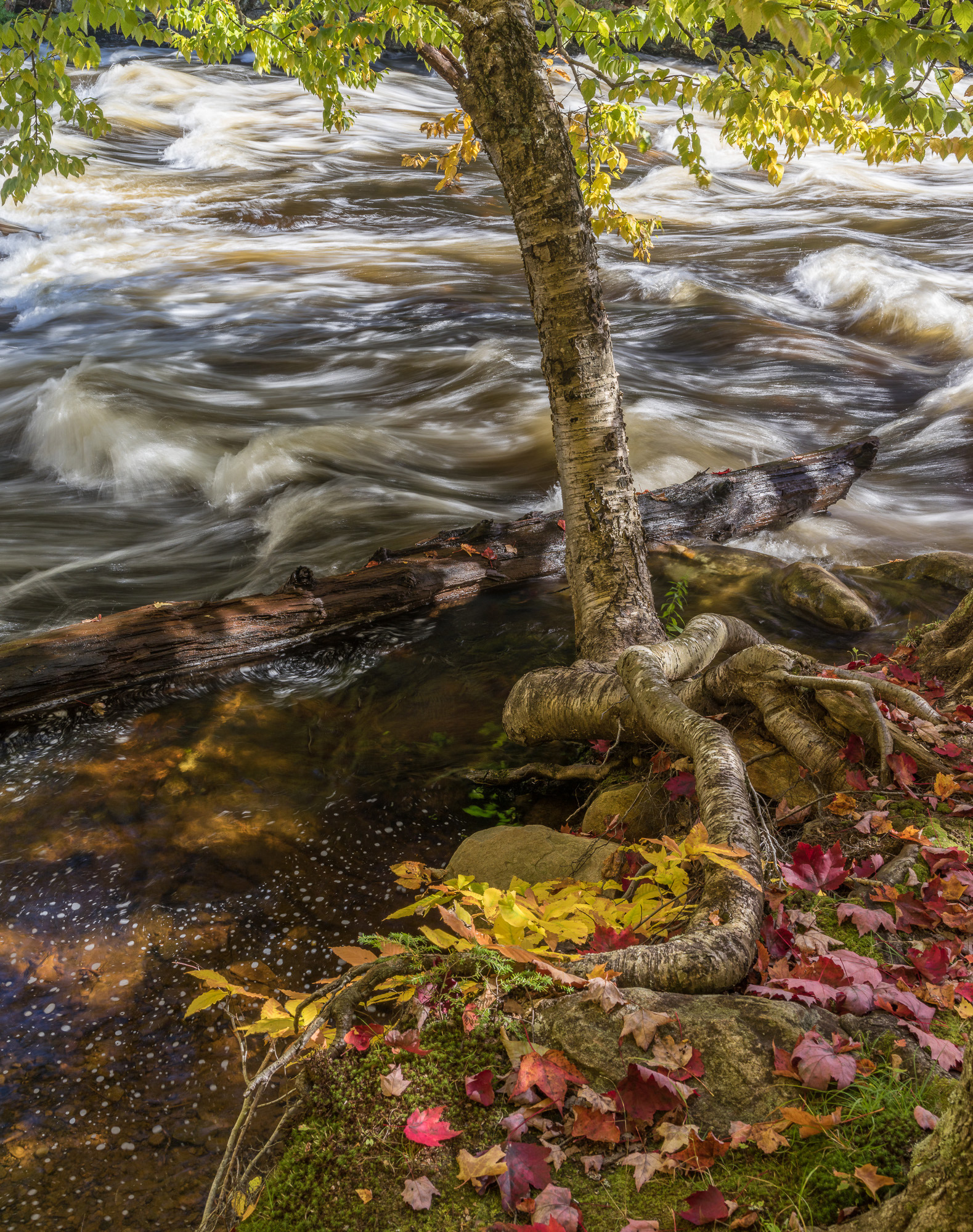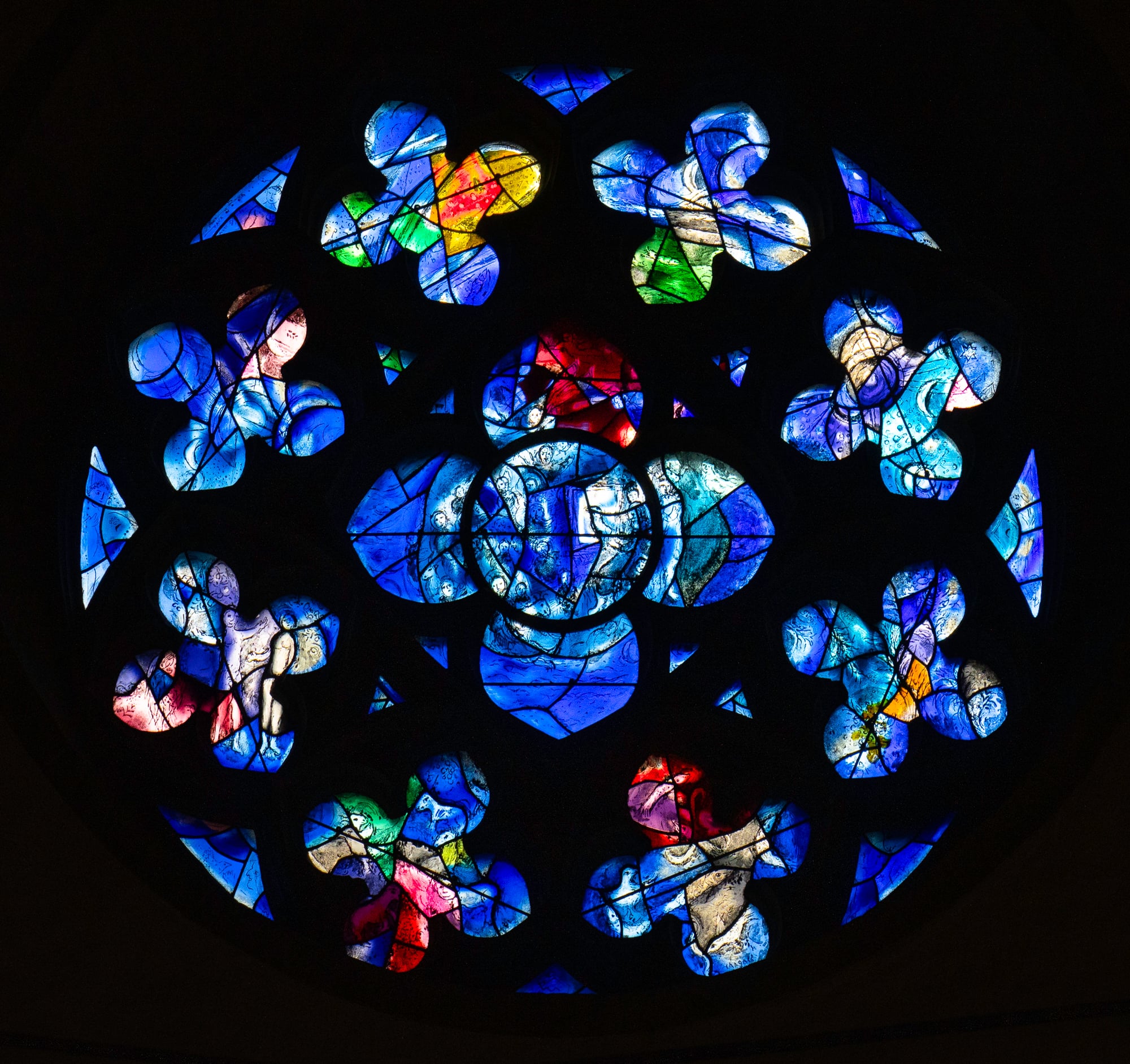“Street photography” is a wildly misleading term to describe what its practice tries to accomplish. Landscape photography has to do with landscapes. Nature photography has to do with birds and beasts. Photojournalism has to do with journalism. Fashion photography has to do with fashion. Architectural photography has to do with architecture. Street photography has absolutely nothing to do with streets.
When street photography began lenses were slow, and film speeds were low, so to capture candid pictures of interactions between people and between people and their environment you almost had to be outside where the light was good. And to find interactions between people and between people and their environment you had to be where the people were. You had to be on the street.
But the genre of photographic art that captures interactions between people and between people and their environment could better be called “humanity.” What street photography attempts to bring about is an evocation of feeling. It doesn’t attempt, as landscape photography does, to show beauty. It’s an attempt to reproduce in the observer a reaction to a demonstration of humanity that made the photographer raise the camera in the first place. Good street photography isn’t simply reportage. It’s a kind of poetry.
Just as there’s good and bad poetry, bad poetry often being nothing more than prose made to rhyme, there’s good street photography and bad street photography, which is often nothing more than reportage.
To illustrate what I think is good street photography, I’m going to avoid the work of great street photographers: artists such as Henri Cartier-Bresson, Robert Frank, and Garry Winogrand, and to avoid a copyright fight I’m going to use some of what I think are my own better street photographs One advantage of this approach is that I can tell you what made me raise the camera.
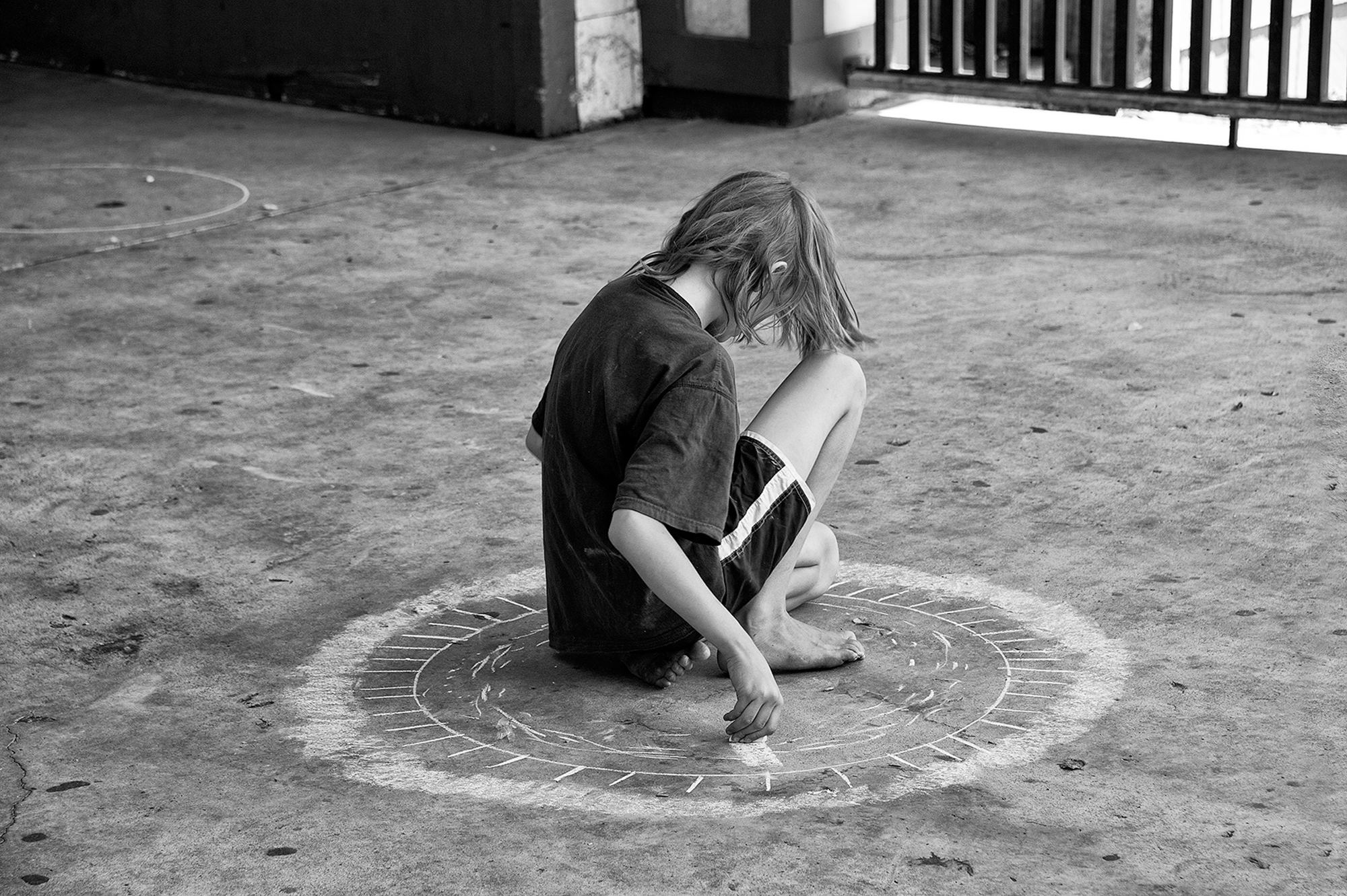

First, to illustrate someone interacting with her environment, here’s a little girl interacting with her environment. Since she doesn’t seem to have a drawing compass, and since the circle seems near perfect and there’s a second one off to the left, I’m assuming she came upon the circle as she walked through this outdoor theater in Soda Springs Park, Manitou Springs, Colorado. Something made her stop and begin elaborating on the circle. You can’t help wondering what dreams are floating through her head as she works with the chalk left behind by the author of the circle. There’s a load of ambiguity in this picture. I think I know why she was in the theater. It’s a shortcut between the two streets. But what made her stop when she saw the circle on the concrete? What is she thinking as she expands on the simple circle?
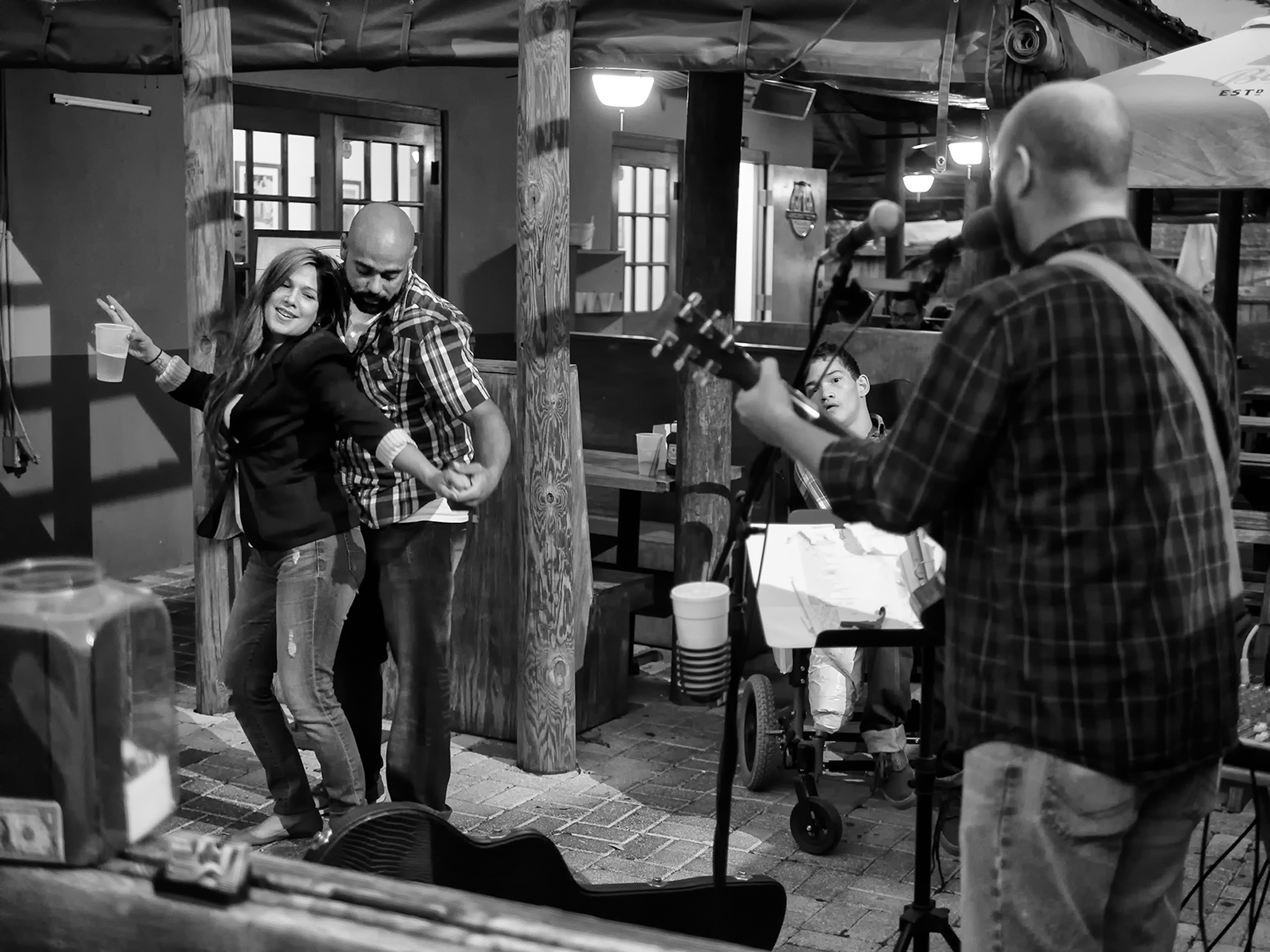

Here’s a scene I ran across on St. George Street in St. Augustine, Florida. The front of the restaurant is open to the street, and when I saw what was happening, I raised the camera, focused, and clicked. I hadn’t more than two seconds to make the shot, and as it turned out, I was extraordinarily lucky — as you always are when a street shot works out.
It seems pretty clear that this is a working couple enjoying an evening of relaxation. The woman’s jeans are worn and torn; that’s not a fashion statement by their designer. They’ve brought a kid who appears to have broken a leg.
It’s possible they decided to dance, and the guy with the guitar obliged them. On the other hand, maybe the guitar player began to play, and they decided to dance. The latter is more likely since the woman has what looks like a glass of beer in her hand. In either case, they’re enjoying themselves, and despite the kid’s broken leg, it seems a happy evening.
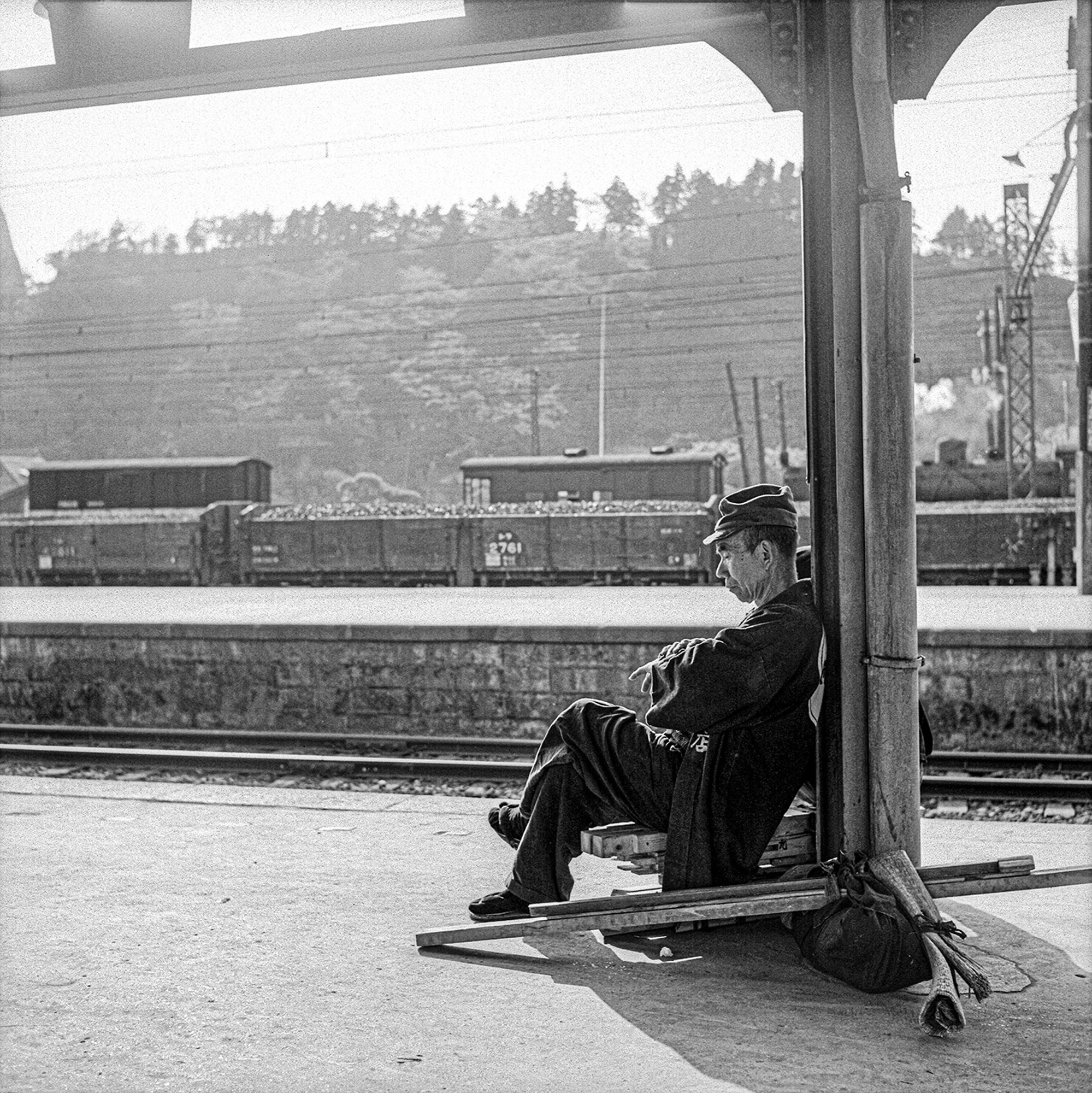

Here’s one from Japan in 1954. I shot it from the window of a train going from Fuji-Hakone-Izu National Park to Tachikawa Air Force Base. The train was stopped at a station when I took the picture.
It looks like the man on the platform looking at his watch is waiting for a train and wondering when it’ll arrive. World War II had been over for only ten years when I made this shot, and based on his age, it seems possible the guy had been a soldier. In fact, his cap seems a lot like the informal caps worn by some Japanese soldiers in that war. This picture has a lot of ambiguity, partly because of its timing.


I made this picture on the porch of a restaurant named “One Flight Up,” one very long flight up some stairs in Mount Dora, Florida. Probably the most powerful ambiguity in this shot is the question: “Is it checkmate?” The poetry is in the player’s expression. I’ll never know whether the game just ended or the player on the left, as he starts his move, is trying to intimidate the player on the right. It’s another of those situations that requires you to have your camera in your hand and to click the shutter now.
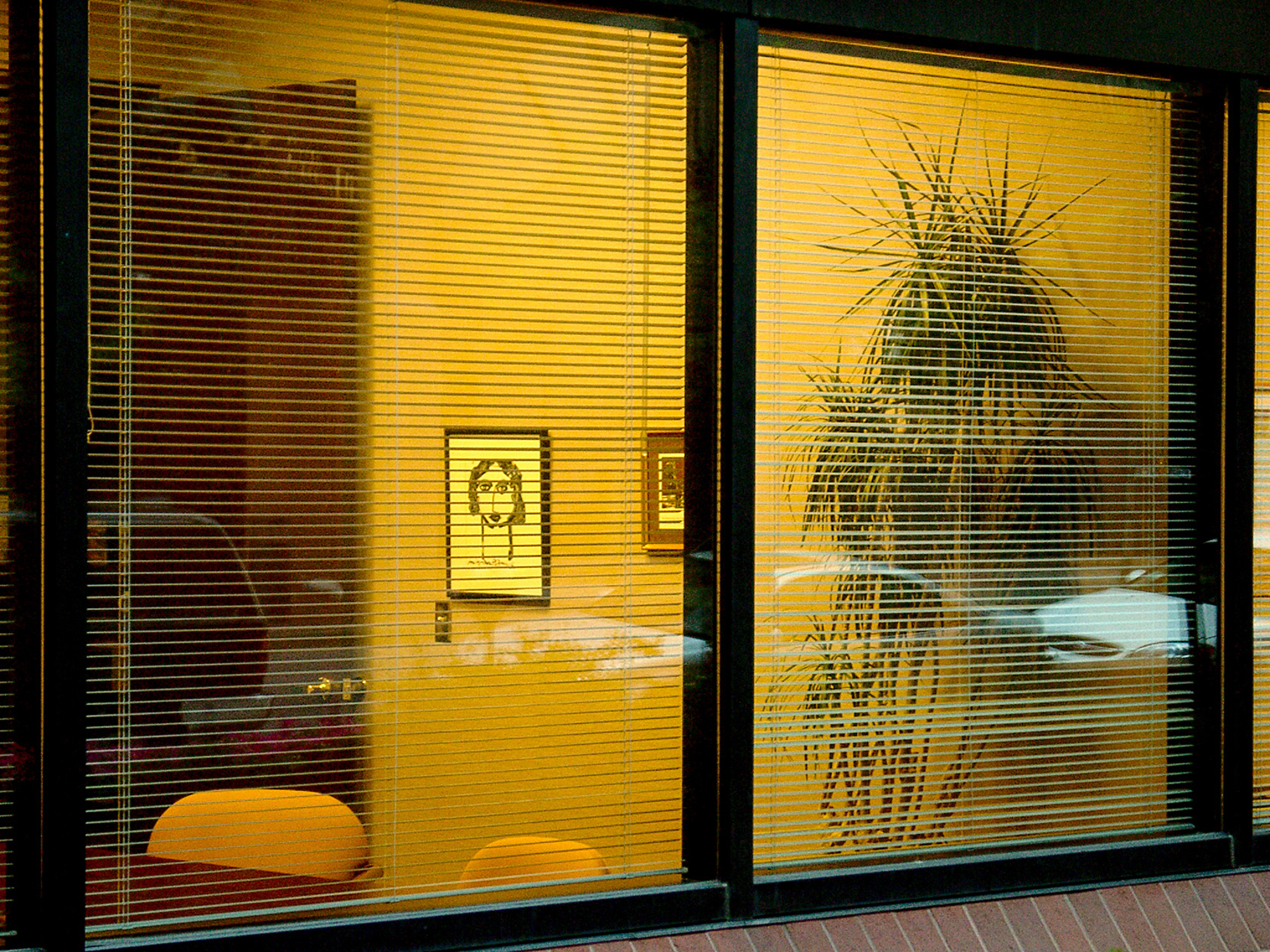

Here’s a street shot without interaction between people and without interaction of a person with the environment. But it’s an environment occupied during the day by a person, and I think it tells us something about the person who occupies it. You have to be a particular person to appreciate the print on that wall and to combine the picture with a large hanging plant. I shot this at night in Colorado Springs. Cars parked at the curb reflect the street lights into the window.
In all five pictures ambiguity raises questions you must answer for yourself. The pictures don’t tell you what to think. That, more than anything else, is what makes street photography work its poetry.
Street photography has nothing to do with streets. It has everything to do with people.
Russ Lewis
October 2023
Read this story and all the best stories on The Luminous Landscape
The author has made this story available to Luminous Landscape members only. Upgrade to get instant access to this story and other benefits available only to members.
Why choose us?
Luminous-Landscape is a membership site. Our website contains over 5300 articles on almost every topic, camera, lens and printer you can imagine. Our membership model is simple, just $2 a month ($24.00 USD a year). This $24 gains you access to a wealth of information including all our past and future video tutorials on such topics as Lightroom, Capture One, Printing, file management and dozens of interviews and travel videos.
- New Articles every few days
- All original content found nowhere else on the web
- No Pop Up Google Sense ads – Our advertisers are photo related
- Download/stream video to any device
- NEW videos monthly
- Top well-known photographer contributors
- Posts from industry leaders
- Speciality Photography Workshops
- Mobile device scalable
- Exclusive video interviews
- Special vendor offers for members
- Hands On Product reviews
- FREE – User Forum. One of the most read user forums on the internet
- Access to our community Buy and Sell pages; for members only.







